Understanding and Challenging Microaggressions
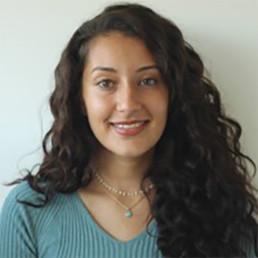
Written by Nasreen D'Agostino
Youth Education Officer, EqualiTeach
“You Don’t LOOK Like You’re Gay!”: Understanding and Challenging Microaggressions.
Although the term ‘microaggressions’ has been around for some time, it is emerging more regularly in conversations as people increase their efforts to engage in discussions surrounding bias and privilege as a result of movements such as Black Lives Matter. Therefore, it seems more pertinent than ever to understand what this word really means and the harm that microaggressions can cause.
What is a Microaggression?
The term “microaggression” has been defined by Columbia professor Dr Sue to refer to,
“brief and commonplace daily verbal, behavioural, or environmental indignities, whether intentional or unintentional, that communicate hostile, derogatory, or negative racial slights and insults toward people of color.” (Sue DW, et al., (2007).
In other words, microaggressions are remarks, questions and actions which are based on assumptions about marginalised groups. Microaggressions can be based on many aspects of someone’s identity, including gender, age, sexual orientation, disability, religion and race. They can be masked as compliments but are often laced with negative undertones. They can be experienced at work, school, whilst shopping, receiving health care and even at the dinner table among family members. Microaggressions can ignite feelings of alienation, hurt and frustration in those who experience them because they are so frequently and casually deployed.
Microaggressions can be packaged in such a subtle way that they can be seen as innocuous, and dismissed as less harmful than more overt acts of prejudice. However, microaggressions are founded upon a the very same set of generalisations and assumptions that underpin overt acts. For example, saying to someone ‘you don’t look like you’re gay!’ is linked to assumptions about Lesbian, gay and bisexual people and an idea that there is only one ‘set way’ of being gay. People who express microaggressions are not necessarily doing so with bad intent, but that is not a get out of jail free card. It is important to accept that microaggressions are harmful, to interrogate underlying biases and to explore how they can influence attitudes and behaviours towards marginalised groups or individuals.
What are some common microaggressions that people face?
Let’s look at five common microaggressions and examine the assumptions and stereotypes they perpetuate, and what could be said instead:
1/ To a disabled person: “I think you’re so inspiring!”
🗶 This can be patronising. Disabled people do not need to be uplifted, validated or given constant reassurances.
✔ Say nothing! Treat disabled people with the same dignity and respect you would treat non-disabled people and that is all that’s needed.
2/ To people of colour: “Where are you actually from?”
🗶 This can seem like an innocent question but when consistently asked to people of colour it is a constant reminder that you are not accepted as being really British by your white counterparts. This can make people feel othered and as though they do not belong.
✔ People may wish to share their heritage at a time that is appropriate and when they feel comfortable to do so. Everyone has a history and family background to share, so consider who is being asked the question and why it’s being asked.
3/ To someone with a ‘foreign’ name: “Don’t you have a nickname, I’m never going to remember that”
🗶 This is extremely damaging, especially when directed at young people. Since so much of our identity is wrapped up in our names, having this stripped away is extremely hurtful.
✔ Always take the time to learn how to pronounce new names. Write names down phonetically if you are finding a name particularly hard to remember or pronounce.
4/ To a female colleague: “You look so young!”
🗶 Not only can this undermine your colleague’s authority, but it also assumes that the most desirable characteristics a woman can have are those linked to her appearance, rather than those linked to her skills and character – in a professional setting this is particularly damaging.
✔ It is fine to compliment someone’s skills or ideas but refrain from commenting on looks as this is very personal.
5/ To people of colour: “You’re really articulate!”
🗶 This comment implies that most people of colour are not articulate, well-spoken or educated.
✔ It is fine to compliment someone’s skills or ideas but commenting on the way someone speaks is unnecessary.
What are the harms of microaggressions?
Some who are sceptical of the validity of microaggressions claim that it is just people being ‘too sensitive’. However, research has shown that microaggressions, ‘although seemingly small and sometimes innocent offenses, can take a real psychological toll on the mental health of their recipients.’ (Harris, 2015). Microaggressions can make environments seem hostile, thus affecting performance and wellbeing.
They can make people feel:
- Frustrated
- Drained
- Uncomfortable
- ‘Othered’
- Alone
- Angry
- Lesser
- Demoralised
- Unwelcome
- Patronised
No matter how seemingly confident or self-assured someone might be, being subjected to constant assumptions and put downs based on your identity is going to take its toll.
How can I stop expressing microaggressions?
Since microaggressions are expressions of deeply held bias which people can often be blind to, it requires a willingness to reflect and engage to unearth them. With greater understanding and awareness of these biases, people can choose not to act on them. Here are some tips for thwarting microaggressions:
i) Be constantly aware of your biases and scrutinise them. This requires internal reflection and honest conversations with yourself which might make you feel uncomfortable at first.
ii) Stop and think before you comment on an aspect of someone’s identity. Bear in mind that microaggressions are often unnecessary comments which can be easily avoided as they serve no real purpose in conversation.
iii) Don’t say or do things based on assumptions or bias. If you think that your comment or action may perpetuate a stereotype about a certain group of people, then do not act upon this impulse.
iv) Listen and be open if someone calls out your use of a microaggression. A commitment to unlearning microaggressions is a journey, not an overnight process, therefore demonstrating a willingness to increase your understanding and knowledge will benefit you in the long run.
What should I do if I experience or witness microaggressions?
- Ask for clarification as to what was meant –Asking for clarification can help someone to go on their own journey and consider the underlying assumptions and messages in their question, comment or action.
- Share the impact of what has been said/done – help someone to recognise the perspective of the target and the detrimental impact of what has taken place.
- Share your learning – we are all on a journey, speaking to someone about how you have previously got things wrong and the learning that you have undertaken can make the challenge less confrontational and support someone on their own learning journey.
The battle against microaggressions can be extremely draining for the target of incidents. Therefore, it is everybody’s duty to challenge inappropriate comments and behaviours, to reduce that burden, create environments where there are no bystanders and where everyone feels safe, included and supported.
EqualiTeach offer staff training (delivered online via Zoom) on equality, diversity and inclusion, including covering topics such as microaggressions, unconscious bias and privilege. Find out more here or get in touch.
Bibliography:
Sue DW, et al., (2007), Racial microaggressions in everyday life: implications for clinical practice, Abstract).
Harris, (2015), Vox.com, ‘What exactly is a microaggression?’ https://www.vox.com/2015/2/16/8031073/what-are-microaggressions
Kendi, I (2019) How to be an Antiracist. London: Penguin Random House.
Williams, T (2019) Psychology Today: Responding to Microaggressions: Safety First. https://www.psychologytoday.com/us/blog/culturally-speaking/201909/responding-microaggressions-safety-first
Wood, J and Harris, F (2020) Diverse Education: How to Respond to Racial Microaggressions When They Occur. https://diverseeducation.com/article/176397/
Coronavirus lockdown: radicalisation upturn?
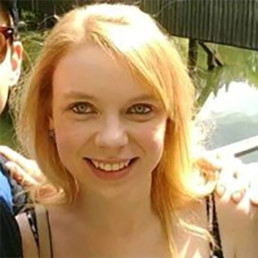
Written by Kate Hollinshead
Head of Operations, EqualiTeach
As the world continues to deal with the coronavirus pandemic, there is increased concern that the situation will give rise to more people being drawn into extremism. The closure of schools and youth groups has meant the closure of support networks for young people, isolation from friendship groups and increased use of the internet, often unsupervised. Those adults trained to identify the possible risk indicators of a young person being drawn into extremism – teachers, healthcare staff and social workers – are no longer spending as much time with the young people in their care. With fewer people to identify the risks and with the knowledge of where and how to access support, it is no surprise that there has been a decline in Prevent referrals since the beginning of lockdown in March (Jones, 2020). Young people’s vulnerability to the messaging of extremist groups is further exacerbated by the fear and uncertainty the pandemic has brought to their lives. In March, young people’s texting service Shout reported that 25% of the messages they received were now about coronavirus and research by YoungMinds found that the pandemic has had a profound effect on the mental health of those under 25 with pre-existing mental health conditions (Venema, 2020).
To add to the concerns, extremist groups are actively exploiting the vulnerabilities of young people and the pandemic in general. Islamist extremist groups such as Al Qaeda and so-called Islamic State have used their propaganda vehicles to call for a change of venue for attacks, suggesting attacks on hospitals treating COVID-19 patients would have a greater impact at the moment, hoping to take advantage of over-burdened security forces and vulnerable health care systems. In addition, both extremist groups have suggested that coronavirus is ‘the wrath of Allah’ and damage to Western governments and economies should be celebrated (EPC, 2020). Al Qaeda publications are encouraging non-Muslims to use this time as an opportunity to learn more about their extreme interpretation of Islam (EPC, 2020) and it is thought that rising unemployment, strict quarantine measures and lockdown fatigue are key ingredients for online grooming tactics. While little is yet known about the full motivations behind Khairi Saadallah’s murder of three men in Reading in June, investigations are taking place to determine whether he was influenced by online material and whether this had taken place during the lockdown period (Sengupta & Dearden, 2020).
Far-right groups suggest that governments are using the pandemic to divert people’s attention away from migration issues, have blamed ethnic minority communities for the spread of the disease (EPC, 2020), and have celebrated reports of disproportionately high numbers of black and ethnic minority people dying from coronavirus in the UK (Dearden, 2020). The Commission for Countering Extremism has recently found that far-right activists and neo-Nazi groups are encouraging followers to deliberately infect Jewish people and Muslims with coronavirus (Dearden, 2020). Conspiracy theories such as China or the US being to blame for coronavirus, or that the pandemic is a hoax created by governments have been utilised and perpetuated by groups. The newly formed UK Freedom Movement attempted to instigate mass protests against lockdown, their stance against which has been fuelled by their distrust of traditional media outlets and the government. Leaders used social media platforms, such as Facebook, WhatsApp, YouTube and Telegram to encourage people to join their protest (Sabbagh, 2020). Indeed, there is some evidence to suggest that traffic to far-right sites has grown. The Institute for Strategic Dialogue has reported that the user base of an international white supremacist Telegram channel focussing on coronavirus grew from 300 to 2,700 people in a month (Sabbagh, 2020).
However, it is important to acknowledge that young people can stumble across information on mainstream internet and social media sites without actively seeking it. YouTube is now young people’s most popular source of news and young people now watch more YouTube than live television (BBC, 2019). This, combined with the knowledge that YouTube algorithms recommend increasingly more alternative and extreme videos the longer the user watches, which is exacerbated in turn by videos autoplaying one after another, means that it is hard to deny YouTube’s role in young people being drawn into extremism. And while some social media sites are working hard to remove extreme content when it is uploaded, the pandemic has generated a flurry of misinformation which has been hard to keep up with. The Centre for Countering Digital Hate has recently found that social media platforms are removing less than one in 10 posts spreading misinformation about coronavirus, including far-right and Islamist extremist conspiracy theories (Dearden, 2020 (2)).
The far-right have also utilised the recent outrage at the murder of George Floyd and ensuing Black Lives Matter protests to propagate white supremacist narratives online. Police forces have confirmed that there has been a rise in political activity in direct response to the Black Lives Matter protests (Townsend, 2020). In June a Burnley FC supporter, who had previously been pictured with the English Defence League’s Tommy Robinson, flew a plane with the banner ‘White Lives Matter’ over a Premier League match. The far-right have also conducted counter-demonstrations to the Black Lives Matter protests, encouraging people to join them by perpetuating ideas that their identity is under threat, stirring up community tensions and providing drink and adrenaline at a time when young people have not been able to socialise.
While police, security forces and schools remain resolute in their fight against radicalisation and extremism, this upsurge comes at a time when authorities are already under immense pressure. Official guidance suggests that if someone has a concern about a young person being at risk, they should visit the Let’s Talk About It website http://www.ltai.info/ for more information and help. Some other useful websites are below:
- Childline: www.childline.org.uk/info-advice/your-feelings/anxiety-stress-panic/worries-about-the-world
- Educate against Hate: educateagainsthate.com/
- NSPCC: www.nspcc.org.uk/keeping-children-safe/online-safety
- Parent Info: https://parentinfo.org/
- ParentZone: www.parentzone.org.uk
- Thinkuknow: www.thinkuknow.co.uk/
- UK Safer Internet Centre: www.saferinternet.org.uk
In addition, EqualiTeach has put together an e-learning course to help people understand the threat of far-right extremism, providing knowledge, skills and confidence to support people to understand what extremist groups to look out for, how they recruit online, what the possible indicators of someone being drawn into extremism are and how to access advice and support.
‘Protecting Young People from Radicalisation and Far-Right Extremism’ is accessible here: https://elearning.equaliteach.co.uk/courses/Protecting-Young-People-from-Radicalisation-and-Far-Right-Extremism
We also have an e-learning course which supports parents/carers to help children and young people to think critically about fake news and prejudice, accessible free of charge here: https://elearning.equaliteach.co.uk/courses/helping-children-to-think-critically-about-fake-news-and-prejudice
Please contact EqualiTeach to find out more about the consultancy services, workshops and training that we provide to further safeguard young people from the harms of extremism: Rachel Elgy, Business Development Manager: rachel@equaliteach.co.uk
Bibliography:
European Policy Centre (2020) In Chaos they thrive: The resurgence of extremist and terrorist groups. http://www.epc.eu/en/Publications/In-chaos-they-thrive-The-resurgence-of-extremist-and-terrorist-group~32c800
Sengupta, K and Dearden, L (2020) in The Independent. Reading Terror Attack: Libyan Suspect May Have Considered travelling Abroad to Join Islamist Group, Security Sources Say. https://www.independent.co.uk/news/uk/home-news/khairi-saadallah-uk-police-terrorism-isis-prevent-a9578031.html
Jones, H (2020) in Metro. Fears that lockdown is increasing online radicalisation amongst young people https://metro.co.uk/2020/05/13/fears-lockdown-increasing-online-radicalisation-among-young-people-12698499/
Venema, V (2020) BBC. Coronavirus: ‘It’s just anxiety, anxiety, anxiety’ https://www.bbc.co.uk/news/stories-52110460
Dearden, L (2020) in The Independent. Neo-Nazis telling followers to ‘deliberately infect’ Jews and Muslims with coronavirus, report warns https://www.independent.co.uk/news/uk/home-news/neo-nazis-coronavirus-jews-muslims-racism-antisemitism-islamophobia-a9608851.html
Sabbagh, D (2020) in The Guardian. Police vow to break up two anti-lockdown protests in UK cities. https://www.theguardian.com/uk-news/2020/may/14/police-vow-to-break-up-planned-anti-lockdown-protests-in-uk-cities
BBC (2019) YouTube is most-watched platform for young people, report says. https://www.bbc.co.uk/newsround/49261194
Dearden, L (2020) (2) in The Independent. Coronavirus: Social media firms only taking down one in 10 posts reported for ‘dangerous’ misinformation, research finds. https://www.independent.co.uk/news/uk/home-news/coronavirus-social-media-misinformation-facebook-twitter-a9547446.html
Townsend, M (2020) in The Guardian. Far-right thugs exploit Black Lives Matter movement, warns UK anti-extremism chief. https://www.theguardian.com/world/2020/jun/28/far-right-thugs-exploit-black-lives-matter-movement-warns-uk-anti-extremism-chief
Diverse Educators: A Manifesto

Written by Hannah Wilson
Founder of Diverse Educators
In August 2020, at the end of the first UK lockdown to curb the spread of Covid-19, Bennie and I sat in the sun in my garden, down the road from the school that we had started together a few years previous and we drafted a proposal for a book. We had met through Twitter and #WomenEd 5 years before that, we were both English teachers and secondary school leaders, we are both feminists who are passionate about diversity, equity and inclusion in the school system. When I secured my headship, Bennie applied to my Deputy Headteacher, and led on our values-based curriculum with diversity and equality embedded across it. A regular topic of conversation in the time we worked together was about the books we were reading and the books we were going to write, individually and together. We knew it would happen one day!
Many of you will know that Bennie is the reason Diverse Educators was started, she came to my office one day and shared her frustration with me at having to split herself multiple ways to go to different events each weekend to explore her intersectional identity. I checked my privilege as a heterosexual, cisgender, able-bodied white woman and reflected on this. We discussed the idea of hosting one event and inviting the communities from #WomenEd, #BAMEEd, #LGBTed and #DisabilityEd to come together, at the same time, under one roof to have a joined up conversation about identity. Our inaugural Diverse Educators event was in January 2018, at which #LGBTed officially launched and Bennie closed the grassroots event with a powerful message: ‘Don’t Tuck in Your Labels’.
Fast forward three years and Bennie is now a Deputy Headteacher at an all-through school where she is leading on curriculum and I am working independently as a Leadership Development Consultant, Facilitator and Coach specialising in diversity, equity and inclusion. We launched the Diverse Educators website, with the help of our partners, in the middle of a global pandemic in response to the spotlight on racial inequities, and the amplification of Black Lives Matters, triggered by George Floyd’s murder. At our first virtual event in June 2020, we were joined by over thirteen thousand people.
The world has finally woken up to the need for social justice, society can no longer ignore it and the school system can no longer not prioritise the urgent need to embed the diversity, equity and inclusion agenda strategically into our schools. Bennie has recently published her first book: A Little Guide For Teachers: Diversity in Schools and we are now inviting the #DiverseEd community to lean in and contribute to our book: Diverse Educators: A Manifesto.
Our book will be structured, like our website, around the Equalities Act. There will be ten chapters, one for each of the nine Protected Characteristics (Age; Disability; Gender Reassignment; Pregnancy and Maternity; Marriage and Civil Partnership; Race; Religion and Belief; Sex; Sexual Orientation) with a tenth chapter exploring intersectionality.
Each chapter will have a chapter editor who will work with ten contributors offering a multiplicity of perspectives on the protected characteristic being explored in the chapter. Each submission will be 1200-1500 words long. Each contributor will interweave personal and professional narrative, framed in theory, to respond to current and historic debates. The chapter editor will write the introduction to the chapter to give context and to frame the chapter’s narratives, arguments and provocations.
We are committed to capturing the collective voice of our community and to showcasing the diverse lived experiences of educators. We are keen for Diverse Educators: A Manifesto to be both academic and accessible. You can review the style guide here. We intend for the book to be solutions-focused with high-quality input on practice, pedagogy, people management and policy.
We would love to hear from you if you would like to contribute. You can submit an expression of interest here. Thank you in advance for your time, energy, experience, expertise and support in contributing to our #DiverseEd book, we are looking forward to celebrating the collective commitment and amplifying your voice.
Sequencing a decolonised curriculum: using Picower’s six elements
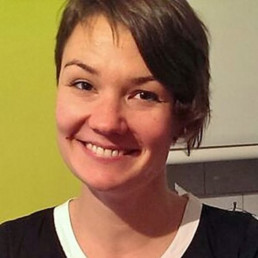
Written by Terra Glowach
Lead Practitioner for literacy and decolonising the curriculum at Cathedral Schools Trust in Bristol
I entered the classroom with the conviction that it was crucial for me and every other student to be an active participant, not a passive consumer…education that connects the will to know with the will to become. ― Bell Hooks
One mistake I’ve made over and over again: teaching traumatic events in history without understanding the need to embed them within a wider, and more empowering, social-historical narrative.
Picower’s work on the six elements of social justice has helped me understand the importance of sequencing, so that
- students do not internalise the trauma of these events, and /or
- see these events as the fault or inevitable condition of the victims’ existence
- nor do these events define a people as powerless, voiceless, or lacking agency
Picower’s work is open source so that teachers can access it. And unlike most EEF research, it is qualitative – looking into case-studies of elementary curriculum sequencing – to examine the ‘how’ and ‘why’ of teaching material that addresses social injustice. The American elementary context is only problematic in the respect that Secondary teachers may need to collaborate across disciplines whereas Primary teachers have more flexibility within their own practice. This limitation aside, Picower’s work is game changing for middle and senior leaders with curriculum development responsibilities.
Her six steps for sequencing material related to social injustice are as follows:
- Self love and knowledge: “provides students with the historical background knowledge to recognize the strengths and resiliency of their communities.”
- Respect for others: “students gain respect for the history and characteristics of people different from themselves. By building on the natural empathy of children, teachers encourage students to care about “unfair” conditions that have affected others.”
- Issues of social injustice: “a critical examination of how identities impact people’s lived and material conditions. Students explore historical and current issues of social injustice, allowing them to identify “isms” and to decide whether they find these “fair.”
- Social movements and social change: “teaches students about how people have fought against oppression through social movements. Students learn that things don’t have to be how they are; unfair conditions can be changed, and students can contribute to that change.”
- Awareness raising: “students engage in activities that increase the awareness of others in their community about the social issues they are studying.”
- Social action: “students have the opportunity to experience what it means to struggle for justice by engaging in social action themselves.”
At Bristol Cathedral, our Decolonising Hub is looking at how we can work cooperatively across all disciplines to ensure these six points are used in an order which empowers students to change their world for the better. We noticed that no 1 & 2 are often combined when we teach any of our subjects as global disciplines. History, English, Geography, Citizenship and PSHE seem best placed to address 3 and 4. Art, Drama and Music seem well placed to contribute meaningfully to no 5 and 6. This year our goal is an exhibit that celebrates student work across the curriculum following Picower’s six steps.
As an example of how to do this in one discipline, our History department addresses this sequence in KS3 by teaching Africa Kingdoms in year 7, the Bristol involvement in the slave trade in year 8, and the Haitian Revolution in year 9. Students first learn about the academic, artistic and economic achievements of African kingdoms before learning about how Black Africans were exploited – so the limited Euro-centric narrative of the white man’s burden is robustly challenged. We also consider the cost of choosing oppression / exploitation over symbiotic trade and collaboration.
With the Haitian Revolution, students understand how an oppressed people were able to overcome tyranny. Black people are not simply represented as unfortunate victims saved by British emancipation, but as having agency and preceding British emancipation with their own by three decades.
To apply a micro-lense to sequencing, I’ve used Picower to think about how I present disturbing context for English texts in single lessons. For example, in the EMC’s excellent collection Diverse Shorts, the story “Brownies” by ZZ Packer addresses white beauty standards and the impact on young Black girls in 1980s USA. I use a video of the doll test to help students understand and empathise with the Black characters in the story.
This video shows several Black children point to a white (as opposed to a Black) doll when asked which is beautiful and good. The moment when Black children each identify themselves as the Black doll afterwards is deeply upsetting, and could serve to normalise these attitudes further if not preceded by content which shows this behaviour to be the likely effect of racist representations in mainstream media – and therefore in error.
So this year I started with the Black Panther’s Black is Beautiful movement in the 60s, and we looked at several examples of Black beauty across film and art (Step 1: Self Love / Knowledge and Step 2: Mutual Respect). Once we had looked at the qualities of these examples and why they were so successful in influencing style, we then discussed their awareness of these movements, and the extent to which Black beauty is mainstreamed in TV, film and advertisements. At this point, I showed the doll test (Step 3: Social Injustice).
Students were just as visibly moved by the doll test as in previous years, if not more so. But in our discussion afterwards, there was less a sense of defeat and pity and more of an understanding that feelings of inadequacy are down to mainstream media, and how race is represented. If Black beauty and excellence were represented more in the mainstream, the doll test might yield different results.
This level of thinking is not only ‘top band’ in terms of contextual analysis, but empowers students to challenge unfair and harmful narratives on the basis that there are better, richer narratives.
Many curriculum designers now recognise the benefits of sequencing knowledge using narratives for long-term memory (i.e. evidenced learning). But Picower’s work is also needed to unlock the agency of students to use that knowledge for meaningful social change.
Inclusion and learning disabilities
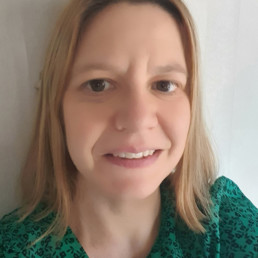
Written by Sara Porter
Biology tutor and an associate assessor for the T level in Lab Science
I am currently researching 18th century women and their role in society. In the 1700s a woman was seen as an inferior being to men. She was not seen as capable of rational thought, however, if she was brought up in a forward-thinking radical household with access to learning, she could carve out a role as a female author. Ironically, this situation was faced by people with learning difficulties in the 1960s. Until 1971 people with learning disabilities were labelled as unteachable and very often institutionalised in specialist asylums. They were not seen as people with any right to education and some of historical medical terminology makes for unpleasant reading. For me this is personal, as my daughter has Down syndrome. Kara’s certainly intelligent and at 7 her reading ability on sight words is that of her peer group. There are differences for example her numeracy is probably like that of a four year old and her speech is not fluent but we certainly have no difficulty getting her message. Maslow’s hierarchy of needs is certainly met.
(http://www.open.ac.uk/health-and-social-care/research/shld/timeline-learning-disability-history).
Inclusion is a strange word in some respects as it has many different spheres. A child with a disability in a classroom could be included but if the child is not learning and not participating then is its tokenism. When my daughter was two, we attended a farm party. My daughter could walk but could not yet talk. She saw her friends feeding the animals but because she could not communicate her needs, she was excluded. At the hospital the same week, we went for her annual eye check using animal pictures. Since her birth she had used Makaton, so she could sign the different signs for what she could see. There were no additional resources but there was specialist knowledge.
Within nursery and primary education I’ve been very determined to push the barriers back as far as I can. It has helped that my background is education and I quickly learnt the names and emails of the specialist experts in this field. The best advice someone gave me was to make sure you get to know your child’s key worker, keep an open dialogue and volunteer at the school. The school learns your name and you get a deeper understanding of the workings of the building. The staff within all my daughter’s education settings have excelled at meeting her needs. I researched as thoroughly as I could to find the places which had an open mind and would acknowledge her value.
As a parent of a child with additional needs, you have to fight for help and the fight has not been helped by austerity. The resources have reduced, and you have to research carefully in order to navigate the funding system. Mainstream education is available to children with additional needs but it;s vital you have a document called the EHCP – which guarantees funding till the child is at least 18. I;ve carved out a few articles in the Times educational supplement with this battle and still have my solicitor on speed dial. It’s not for the faint hearted as LEA are under horrendous pressure to meet demand on very limited budgets. Families form tight knit groups to help each other out and I have seen the struggle from all sides. It’s very similar to the battles faced by women in the 1700s and it is your support structure which can help you overcome these barriers. Lockdown has only made this situation more extreme and there is a feeling that much of the educational ground won through years of legislation has been lost.
On a positive note the role models and expectation for my daughter have never been higher. Technology and research is bringing in wonderful opportunities and choices. Her class adores her and she is accepted as Kara. We have just been playing with her friends on the playground and she’s going to inflict more biff and chip books on me tonight. When inclusion is done properly just like 18th century women it can open doors and allow people to blossom. It just needs funding and support.
Diversity, Disclosure and Invisibility
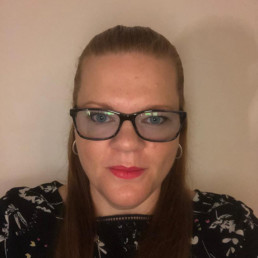
Written by Paula Tankard
Headteacher and has worked as a SIP for local schools
Diversity
Diversity is often referred to in terms of ‘people who look different’. However, not all diversity is visible. This think piece is about a different side to diversity, one that is less visible. I believe that more conversations about diversity and inclusion have happened in schools in the past term than ever before – and this is great. People know more about the Equality Act (2010) and are implementing the recommendations. Many educators can name all of the protected characteristics listed in the act. There are nine, and it is against the law to discriminate against someone because of:
Marriage And Civil Partnership
I am a teacher and headteacher and I also happen to be gay. When a protected characteristic is visible you don’t have to include this in your introduction to various stakeholders. However, when your characteristic is invisible there is a disclosure dilemma.
Disclosure
When do I say it when I introduce myself ‘Hello I’m the new headteacher and I’m gay’? Clearly not, so how do I do it? Do I rely on staff room gossip to do the job for me? A casual comment to the ‘right’ person at 8:30am could mean that the whole school knows by playtime. Each time I have done it differently so clearly there is no right or wrong way and it is up to each individual to find a way that works for them. For both of my headteacher roles I told the chair of governors first and then we agreed a plan about when and who I would tell. Then I spoke to the leadership team in the first meeting and they mentioned it to others.
Who do I tell? Do I tell staff but not the parents? Should I tell the children? Some might say ‘well it is none of their business’ and to a certain extent I agree. In both of my headteacher roles it has been left up to me who I want to tell and in both cases the staff were told and as there were staff who were parents so most of the parents were aware but the children were not specifically told. I had an open discussion with the chair of governors about this decision, I explained that in an appropriate situation if a child asked that I would not lie and would talk to the child in an age appropriate manner. When I was class based, I worked for heads who put a clear ban on any staff talking about their life outside of school with any of the stakeholders, there was even a ban on personal photographs visible in classrooms. Other heads have said it is up to individual staff what they want to reveal.
Early in my teaching career I was specifically told by the deputy head that I could not reveal my sexuality to any pupils or parents from the school. This was said because ‘Parents would not want me to be in the classroom when children are changing for PE, as I would see girls in their underwear.’ I did question if they thought being a lesbian was the same as being a paedophile, although this question wasn’t answered and I received an apology, it had still been said. The lasting effect of this statement was a reluctance for me to tell anybody at work who I am.
Invisibility
There are many characteristics that are clearly visible, some that are sometimes visible and some that are completely invisible. So if you have one of the invisible characteristics you have to tell people for them to know.
It has been my experience that leaders and governors have no clear plan on how to manage this. They have perhaps not thought through who and when staff should reveal their invisible protected characteristics to, and are somewhat hesitant to speak to staff about it. This may be because of the fear of offending somebody and being accused of homophobia and I understand that. I would have preferred to have been asked about it before I started work so that we were all clear.
It would have prevented a very awkward situation for me. Before I moved into leadership I taught Year 6, during a PHSE lesson I was asked if I had got married in the holidays, to which I replied yes. The child then asked me was it to a man, or a woman? I was flummoxed. Not by the answer but by – what am I allowed to say? If this has been discussed before it would have prevented my jumbled answer of yes and then me having to go and see the head to explain that I had just ‘outed’ myself to my class.
What now?
I have listened to various facilitators and trainers talk to school staff and leadership teams to say ‘You need to have people who look differently on your SLT, staff or governing body’.
‘You need visible role models for the children in the school from Black, Asian and Minority Ethnic communities’. I do not disagree, and have said the same thing myself. However, I wonder if the focus on ‘look’ means that other protected characteristics are overshadowed?
So I ask that when you discuss diversity in school, during assemblies, staff meetings and governor meetings, please talk about people who are different not just about those who look different. Make sure you include all protected characteristics in your presentation and discussion.
As leaders have a plan to support staff with invisible protected characteristics. Talk to them, guide them with their inevitable disclosure dilemmas and support their decisions.
Why We Need More Diverse Texts in Primary Schools
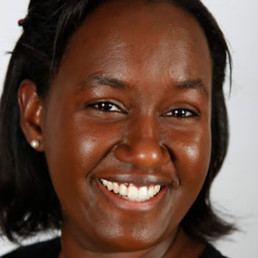
Written by Fabia Turner
Over ten years’ combined experience in education and educational publishing and a member of the Critics of Colour Collective
I first realised I wanted to make books when I was five years old. I’d just bought Mr Greedy by Roger Hargreaves, from a stall in my school’s lobby. The purchase price was a mere 10 pence, and in that brief exchange of money for books, my life changed forever.
As I proudly held that little paperback, I experienced what I can only describe as sensory joy! The pristine shiny cover, the whiff of glue/ink on every page turn plus the satisfying creak from the spine as it inevitably yielded. I knew right then the magical process of creating books was a thing I must be part of.
The problem was I was Black, and Roger Hargreaves was not. Neither were Jean and Gareth Adamson who created the Topsy and Tim series…or Roald Dahl, Eric Carle, Shirley Hughes, Helen Creswell, Ian Serraillier, Michael Bond, Edgar Allan Poe, or Henry Wadsworth Longfellow. These writers dominated my childhood experience and although their texts undeniably developed my literacy skills, they simultaneously dampened my ambition to work in publishing. Lack of exposure to diverse literature in my formative years meant I believed only white people were skilled enough, clever enough, and powerful enough to write and publish books.
It wasn’t until GCSEs, when a radical history teacher introduced me to Toni Morrison, that I was finally exposed to Black authors. I devoured Morrison’s books, but the damage had already been done. My early literary experiences were deeply ingrained in my psyche and I had zero confidence in my abilities as a creative.
Later, my A-level English teacher begged me to apply to Oxbridge, but fear of failure took over, and I refused. After all, in class we’d studied Shakespeare, Hughes, Wordsworth, Larkin, Chaucer…you see where I’m going with this! My parents didn’t envisage a publishing career for their Black daughter either so, eventually, I became a teacher, and the years rolled by. It took 25 years, from the time I bought Mr Greedy, to believe I was just about good enough to attend a publishing interview—and to my complete shock, I got the job!
I tell you all this so you understand the real impact of limiting access to multicultural resources on Black children’s outcomes. The literature we are exposed to when young plays a huge part in shaping our view of ourselves and the world around us. Publishers, educators, and parents need to be vigilant and discerning about the range of texts available to young readers to ensure they develop the self-confidence, self-worth, and drive to pursue their deepest desires.
Which leads me to my next point: quality not quantity. Some Black books hitting the market, from white and Black authors, may check the diversity box but do not meet the high standards required for whole-class teaching. Teachers should not feel pressured to include Black texts—especially those written by celebrities—if they are not up to scratch. (I won’t name names!)
As we’ve always done, regardless of the author’s ethnicity, texts need to be scrutinised for their suitability, otherwise we’ll just start pedalling backwards! The recent misjudged illustration, discovered by a student in one of AQA’s psychological textbooks, points up the need to evaluate all aspects of educational resources.
So far on my book quest, I have encountered some inspirational like-minded teachers who are working hard towards change for the better. I would like to shine a light on some of them:
Calder Valley Books for Change: Amazing early years teacher, Ciara Sturges, has organised a much-needed crowdfunding initiative. Her aim is to raise enough money to buy quality diverse and inclusive books for every primary school in the Calder Valley, from Rastrick to Walsden. Follow her on Instagram and donate to her JustGiving page if you can.
Jamel C Campbell is an early years educator, EY consultant and aspiring children’s author. He has worked in the industry for 18 years. Jamel is one of the UK’s Men in the Early Years Champions/Ambassadors. He has featured on numerous platforms as a keynote speaker and collaborated with many well-respected EY professionals. He stresses the importance of having men in the early years and a balanced workforce. He offers three training workshops for EY teams and settings, based around approaches to practice and staff wellbeing. Follow him on Twitter or Instagram.
Jen Foster is a passionate educator and mentor who has released a refreshingly frank special-edition issue of her e-mag Foster Our Teachers, which focuses on diversity and inclusion in UK schools. It’s called ‘The Inclusion Issue’, it’s free to download and is written for teachers by teachers. It contains a great article about use of multicultural texts in the classroom. Follow Jen on Instagram to get the link to download the e-mag.
Why Decolonise the Curriculum?
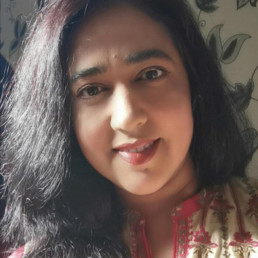
Written by Nuzhat Uthmani
Primary Teacher specialising in Global Citizenship and Antiracist education
I posed a survey through @Scotedpolls recently in which 25% of respondents said they did not feel they needed to decolonise the curriculum. Despite the majority of respondents expressing an interest in learning more, this statistic stuck with me. Is it because educators don’t understand what the term means or is it because they don’t see that there is an inherent problem with our curriculum? Let me address both these possibilities.
This time last year, even I had not heard of this term. Lockdown allowed me the freedom to invest in my own professional development and, as an advocate of global citizenship, I learnt more about decolonising the curriculum and its impact on the education system.
Traditionally, much of our curriculum is framed around the successes of the British Empire. It fails to acknowledge the contribution of communities and nations without which the empire would not have been as successful or wealthy as it once was. The stories of what those nations sacrificed as a result has been hidden away for centuries. Decolonising the curriculum refers to the inclusion of those stories, characters and contributions of others around the world that has impacted on the lives that we live today.
The Black Lives Matter movement is seeking to do this by raising awareness of how the UK gained from the slave trade while committing human rights abuses on those communities. However, as educators we must be mindful of not promoting a stereotypical view of certain groups. When we teach about slavery, we should be mindful to also teach about the contribution of Black, Asian and Ethnic Minorities to Science, the Arts and Politics for example.
I’m on a mission now to embed diversity across all the curriculum. It does not mean scrapping everything we know and teaching new topics, instead it involves a mind-shift from educators, ensuring the inclusion of diverse examples and resources in their daily teaching. It means ensuring that one narrative doesn’t dominate out curriculum but a diversity of perspectives and experiences are represented.
So, what about those in our community who feel nothing needs to change? My question to those is how inclusive is your practice? Holding standalone themed weeks is a box ticking exercise we need to move away from and embrace diversity in all that we do. If you rarely use books with characters of colour, if you only use examples from the Western world, then that is not inclusive to those learners who never see their heritage valued within the classroom, so please think again.
If you want to learn more please check my blog on Global Citizenship Education for lesson plans, research, and links to a variety of organisations who are all working towards establishing anti-racist education and can help you get started on your journey to offering a more inclusive and diverse curriculum.
A Reflection on My First Year of Teaching, Inspired by #DiverseEd

Written by Char Aramis
A primary NQT who uses they/them pronouns. Char blogs at transteacher.wordpress.com
Along with many others, I had the joy of listening (and tweeting!) along to the online #DiverseEd event on 17th October. When Hannah Wilson (@Ethical_Leader) asked me to write a blog response, it took me a while to decide on a subject, but we all know that the best way to improve is to reflect on what we’ve done before, so here is a reflection on my first year of teaching through a lens of diversity and inclusion.
I am going to use the things I have learned over the last few months to reflect on the things that I taught and the way that I taught them – specifically topic in terms 1, 2 and 4, because covering everything would make this blog far too long. However, I am still new to this – and to teaching! – so I welcome any additional points or suggestions you may have after reading this.
Because of the topics we studied, most of the issues here relate to race, ethnicity and nationality. For context, we were based in an area in the South West of England where nearly 85% of people were born in the British Isles. Of the rest, a good chunk hail from Poland, with others from Romania, the Philippines, Turkey and Bangladesh making up the rest. In my class, about half of the children had English as an additional language, including children from all of the countries listed above plus one or two others. Roughly two-thirds of them would generally be considered White.
So then, let’s get started. As I’m sure many schools did, we ran a Black History topic at the start of the year. Each year group focused on a significant Black person from history and we studied Nelson Mandela. We also briefly mentioned Martin Luther King Jr and Katherine Johnson in an end-of-term art project, which was displayed in the school for the rest of the year.
Now, if I recall correctly, these had been decided before I joined the school. Nonetheless, I don’t think I noticed at the time that thing that appears strikingly obvious to me now: none of these figures is from British history. Most of them, as is common in our studies of Black history in British schools, are from the United States and Nelson Mandela is of course from South Africa. I wonder if perhaps this is worse: I expect South Africa – a country that many of these pupils may never have heard of – seems much more remote and less relevant to them than America, which they at least engage with regularly through film and television.
We discussed racism and protests and fair treatment, but I certainly lacked the confidence and knowledge to address these subjects in the way they deserved (it was my first ever term of teaching). I do still feel that I would benefit from further training and resources to support this.
If I were to teach Black history as a topic again, I would definitely seek to choose a figure or subject that is more relevant to British history. The Bristol bus boycott or Windrush, for example. If I had to teach Nelson Mandela, I would link it back to racism in the UK around the same time – although we had no official segregation, I could teach about Britain before the Race Relations Act(s) and cases such as that of the marriage between Seretse Khama and Ruth Williams.
Our term 2 topic was extreme weather, specifically tropical storms. We focused on tornadoes and Kansas because we linked this to The Wizard of Oz. There was essentially no representation of any under-represented groups here – focussing for the moment on the topic teaching and not any subjects that are or could be discussed in relation to the book.
In the interests of allowing children to be seen in our curriculum and broadening pupils’ geographical knowledge beyond “the West” (I notice that the National Curriculum for KS2 only requires geographical study of regions of “the United Kingdom, … a European country, and … North or South America”), we perhaps could instead have looked instead at the Philippines, Bangladesh or the Pacific Islands (one child in the class was from Melanesia), which can also experience tornadoes, typhoons and cyclones. The difficulty here I think would be in deciding whether to focus on one over the others and if so, which one. Additionally, it would have been very specific to my class and much less relevant to the parallel classes in the year group. However, it could have been an opportunity for certain pupils to talk about the countries their families come from and perhaps teach their peers something of the language they use at home.
In term 4, we studied the Amazon Rainforest. I had planned a lesson on the history of the major city of Manaus, including its (pre-)colonial history and the impacts of the rubber industry, but I never got a chance to deliver it because we closed for lockdown. This is a subject which, I’m sure, deserves more than one lesson but the focus of our topic was actually on the physical geography – rivers and rainforests – as well as map work with a little human geography squeezed in.
I never fully finished the plan for this lesson so it’s difficult to evaluate it, but if I were to come back to this topic, I think it is worth considering the perspective from which I tell this history. It is important to show the effects that the arrival of Europeans had on indigenous populations and their home, and to consider the way they were treated. I do think I would probably need some support to do that topic justice.
There is an awful lot more to be considered regarding both the content and approach of my first year of teaching but that will have to wait for future blog posts – probably over on my own blog. Thank you for reading – any comments, feedback or questions are welcomed and encouraged.
Interactive Diversity Calendar 2021

Written by Dual Frequency
Dual Frequency is a teaching resource provider that seeks to promote dialogue in relation to inclusion
This December, Dual Frequency is thrilled to share with you a brand new interactive diversity calendar that can be used in schools, education settings and other organisations to ensure you never miss a significant date in the EDI calendar.
Why is the diversity calendar important?
Because diversity matters, every single day! The more we immerse ourselves in diverse groups, the more we will be able to celebrate positive representation of these groups, and the richer our communities become.
How can you implement the diversity calendar within your organisation?
The diversity calendar includes a mixture of equality, diversity and inclusion related events along with key dates. This is not intended as an exhaustive list. At a glance you can see the key dates that are listed each month, click the date to be signposted to a resource and more information, plus suggestions of how you can celebrate the date.
How does the colour code in the diversity calendar 2021 work?
The calendar is colour coded to the strands of the Equality Act 2010. It is important to value everybody’s contribution to society all year round: far too many communities are so regularly overlooked in the Gregorian calendar. By focusing on the protected characteristics that fall under the Equality Act, our hope is these communities will no longer be overlooked but celebrated in contrast.
If you require the calendar in a different format, such as large text or on an (accessible) yellow background, then let us know and we will do our best to meet your requirements.
How do I get my calendar?
Download yours right now by clicking this link: https://www.dualfrequency.co.uk/diversity-and-inclusion-calendar-2021
If you are in a position to make a donation for your calendar, then we appreciate this. It helps to keep a grassroots organisation like Dual Frequency running and makes a huge difference to our community fund which ensures we can pay our contributors for their time and efforts.

